
Shopify vs eBay - What is Better for Dropshipping in 2024?
Are you considering starting a dropshipping business? First, you need a platform to sell on. There are many options available for beginner entrepreneurs, but two names stand out from the crowd: eBay and Shopify. While both platforms are incredibly popular for online sellers, they must understand the nuances of each platform for their own store to succeed. From policies to demographics, in this blog, we’ll break down the main differences between the two platforms and determine which platform is suitable for your dropshipping business.
Can you actually dropship on eBay?
Yes. Dropshipping is allowed on eBay. However, there are a few things to keep in mind when using this online marketplace for your dropshipping business. eBay has strict policies around third-party fulfilment that directly affect dropshippers. These restrictions apply to the type of supplier you can use and how you purchase your inventory. According to eBay’s third-party fulfilment policy:
-
Sellers cannot list an item on eBay and then purchase it from another retailer or marketplace that ships directly to the customer - stock must be pre-purchased or otherwise owned by the seller before listing. This means you cannot use suppliers or platforms such as AliExpress or Amazon.
-
You must be clearly identified as the seller on all packing slips and invoices.
-
The buyer cannot be confused or misled about their package origins, for instance through a supplier’s branded packaging.
-
Listing must accurately state where an item will be sent from.
-
The sale must be fulfilled on time and within the terms of the listing.
-
Third-party suppliers cannot use or share eBay order information for any purpose other than fulfilment.

The purpose of these restrictions is to minimise bad purchasing experiences and preserve trust in the platform. eBay strictly enforces these policies, with punishments ranging from hiding listings from search results to account suspension or banning.
eBay also has strict policies against selling counterfeit or trademark-infringing items. As a dropshipper, it is your responsibility to ensure that the products you sell do not violate any of these policies.
When listing products on eBay, the seller is responsible for fulfilling orders and ensuring customer satisfaction. This means that if you are dropshipping, you must have a reliable supplier who can consistently provide quality products and timely shipping. To avoid violating eBay’s policies, they recommend working with wholesale dropshipping suppliers. For more information on finding the right supplier for your business, you can check out our blog “How to Find Safe and Reliable Dropshipping Companies”. Or, skip ahead of the queue and join Dropshipzone today for instant access to hundreds of reliable wholesale dropshipping suppliers around Australia.
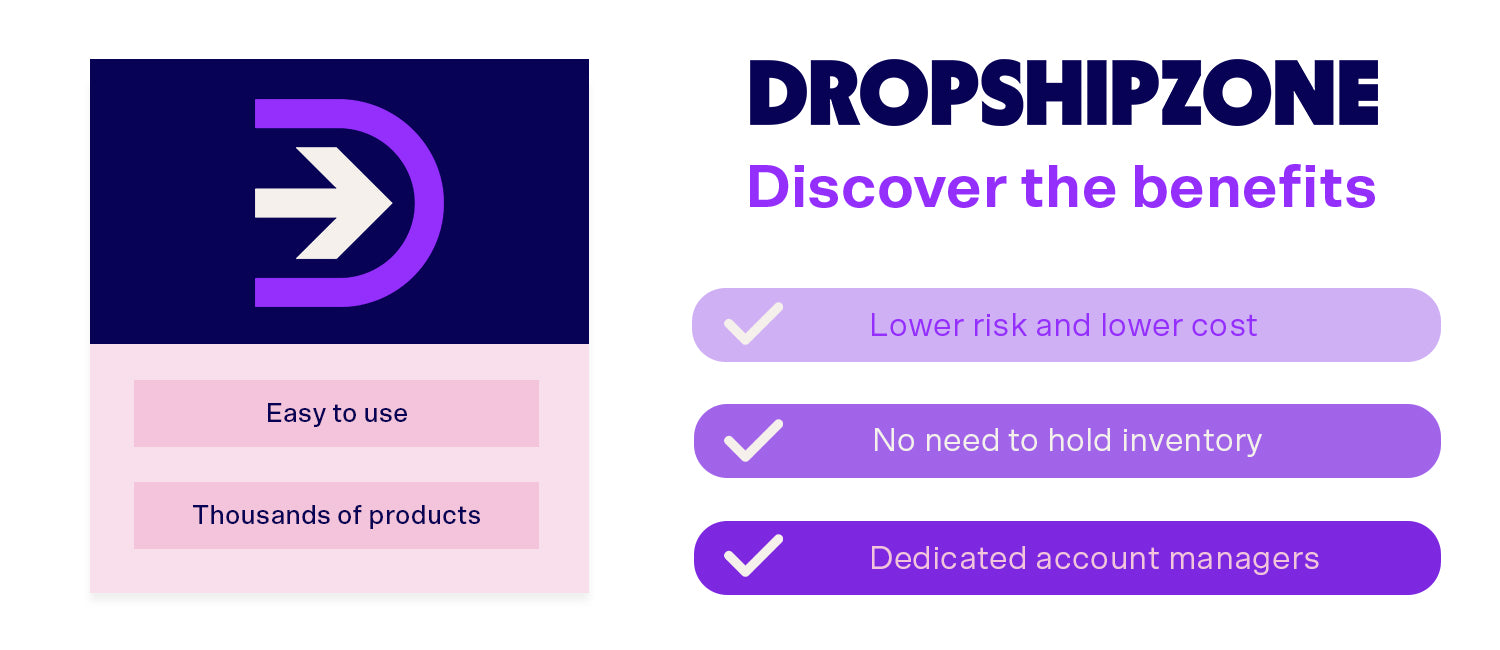
How does eBay differ from a Shopify store for dropshipping?
eBay and Shopify are two popular platforms used for dropshipping, but they have some key differences. The main difference lies in their business models - eBay is a marketplace where individuals can sell products, while Shopify is a software-as-a-service (SaaS) platform for businesses to create their own personalised online stores.
One key difference between the two platforms is the level of control and branding you have over your store. With eBay, you are limited to the design and features provided by the platform. eBay allows you to create your own homepage and customise it to match your branding, but the customisation options are limited. With Shopify, you have more control over the look and feel of your store as well as a unique domain name. You can choose from hundreds of free and premium themes, and edit them to suit your unique needs. Shopify also has a wide range of apps that you can use to further customise your store, from building SEO-friendly listings to implementing loyalty programs. Furthermore, you can use apps to improve efficiency through automation, AI, advanced analytics, and other cutting-edge tools.
Attracting customers to your store is different between platforms. Because eBay is a firmly established marketplace, it already has a large customer base. As of 2023, eBay has around 132 million active buyers worldwide and consistently maintains high levels of customer satisfaction. In Q3 of 2023, eBay sold $18 billion worth of products, with as much as $11.6 billion worth of products purchased on mobile. Although you’ll be competing with upwards of 1.7 billion listings, your products will be immediately available to a large audience of high-spenders. You can further boost your visibility with promoted listings and take advantage of eBay’s algorithm, which will start recommending your products to other users, and you may become eligible for the Great Price badge depending on your item price, item description and store performance. Shopify, on the other hand, is not an established marketplace - you are creating a brand-new website. As such, you have to build your audience yourself. This means dedicating more time to social media marketing, content writing, and SEO. Rather than being at the whims of eBay, you’ll be under the thumb of the Google algorithm, which has its own unique set of rules.
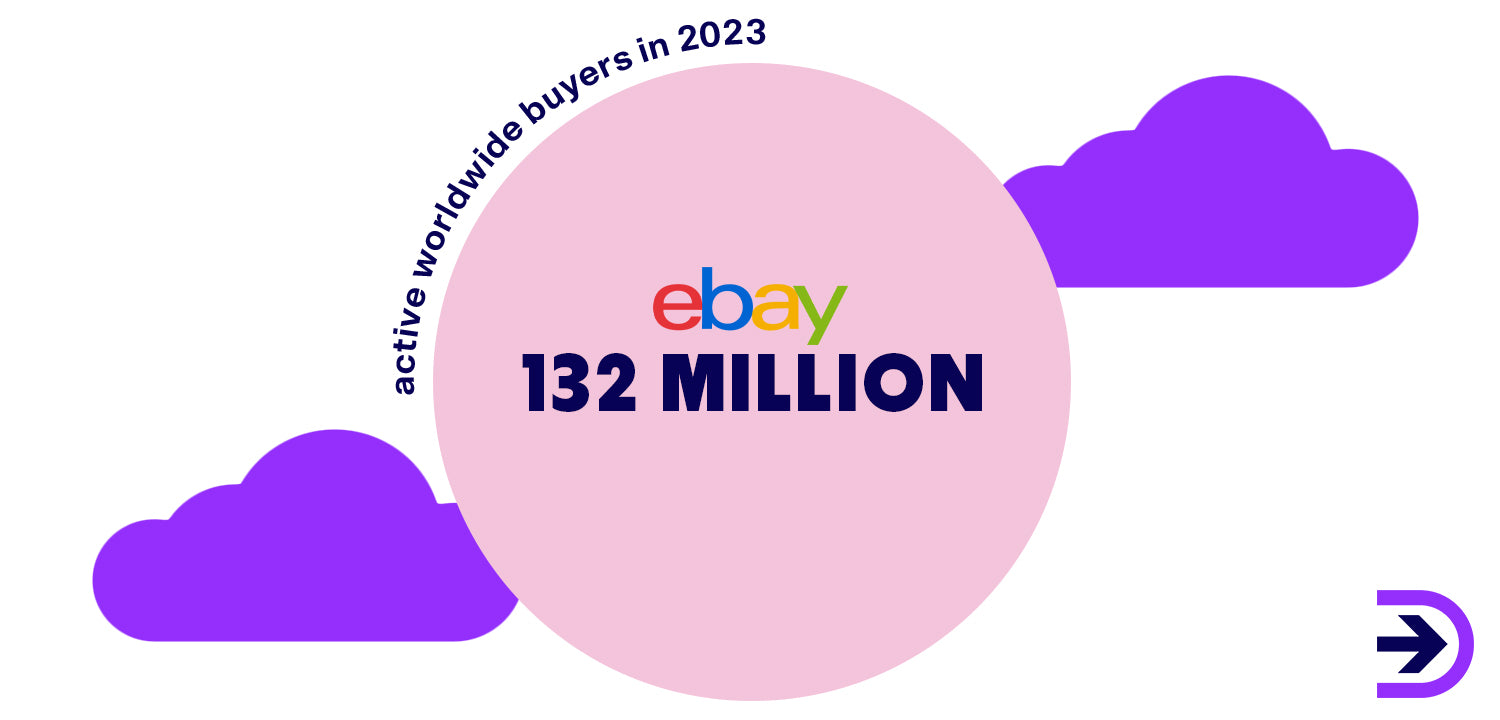
Another difference is in terms of fees. eBay users get a limited number of free listings per month, after which the platform charges a listing fee for each product listed for sale, as well as a final value fee based on the sale price of the item. You can pay for optional listing upgrades, and you can also promote your listings. Finally, eBay offers an optional subscription that gives users access to promotional tools and insights. On the other hand, Shopify has a monthly subscription fee and payment processing fees but does not charge any additional fees per sale. Each plan gives you access to more tools, lower transaction fees and other features such as gift cards and expedited shipping.
Finally, both platforms offer customer support, but Shopify delivers the most. There are various ways to find 24/7 support on Shopify: through their support pages, via chat or email, or through the Shopify Community forums. eBay has live chat features, comprehensive help articles and a thriving community, but their more extensive customer support features are hidden behind higher-tier subscriptions.
eBay Dropshipping
Despite growing competition in the ecommerce sector, eBay remains the second most visited ecommerce marketplace with over 135 million active users worldwide. First appearing in 1995 (1999 in Australia), eBay has been part of the internet landscape for almost three decades. In that time, the platform has grown from strength to strength, focusing on building customer trust in online shopping and incorporating technology to create a smoother, more secure buying experience. With initiatives such as the eBay Money Back Guarantee, the platform has built a reputation as a safe and secure platform to purchase goods online. For sellers, eBay has a low barrier to entry compared with other platforms such as Amazon or Shopify. Anyone can start selling on the platform quickly and easily thanks to its user-friendly interface, advanced search tools and simple fee structure.
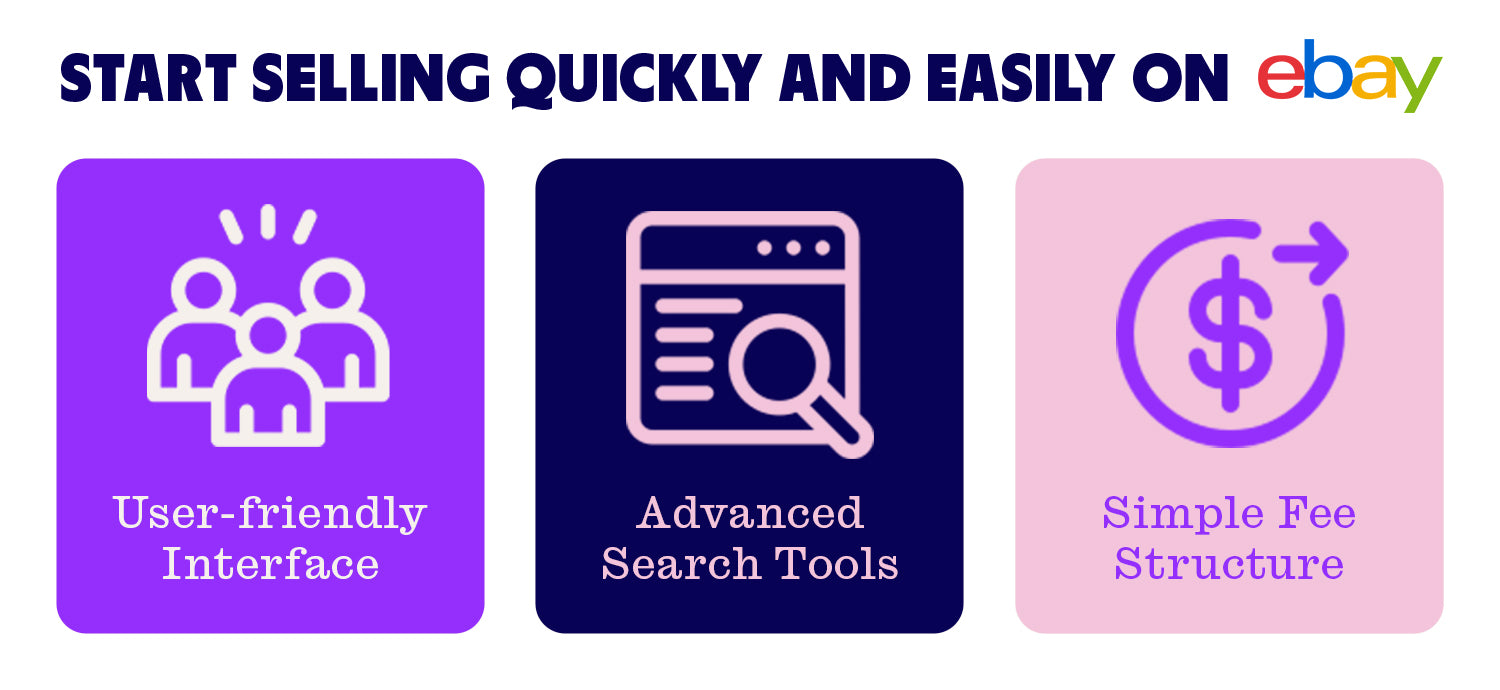
Historically, eBay’s focus has been on reselling. Originally designed as an auction site, eBay’s focus has shifted to fixed-price “Buy it Now” listings which make up most of the site’s sales. The platform uses both B2C and C2C models, meaning a large number of eBay store owners are also buyers. This combination of features makes it a thriving platform for passionate niche enthusiasts, from collectors to hobbyists. According to eBay CEO Jamie Iannone, these buyers are 9 times more likely than non-enthusiast shoppers to spend money across all categories and will shop an average of 9 other categories after a single purchase. This trend is the driving force behind initiatives such as eBay’s Authenticity Guarantee, which further builds consumer confidence and adds protection for buyers, and their new ad campaign Everyone Has a Thing. For dropshippers in DIY, designer-label fashion, art or other specific niches, eBay may be the right platform for you in 2024.
Not sure what to dropship on eBay? No problem. The platform has a built-in product research tool called Terapeak. You can use Terapeak to research recent marketplace trends, see real-world sales data and peek at your competition. You can identify categories with high demand and low supply, stay ahead of seasonal demand, and keep your inventory relevant for buyers. You can also use Terapeak to optimise and refresh any existing listings. You can view all of this data in clear charts, graphs and statistics. Best of all, the tool is free for all sellers.
There are various ways to boost your exposure on eBay. You can pay for Promoted Listings, which will give your listings greater exposure on the eBay network. These come in three packages:
-
Promoted Listings Standard: A cost-per-sale model, where you only pay if your listing leads to a sale.
-
Promoted Listings Advanced: A cost-per-click model that gives you preferred access to premium placements in search results.
-
Promoted Listings Express: Charges an upfront flat fee to boost visibility for auction-style listings.
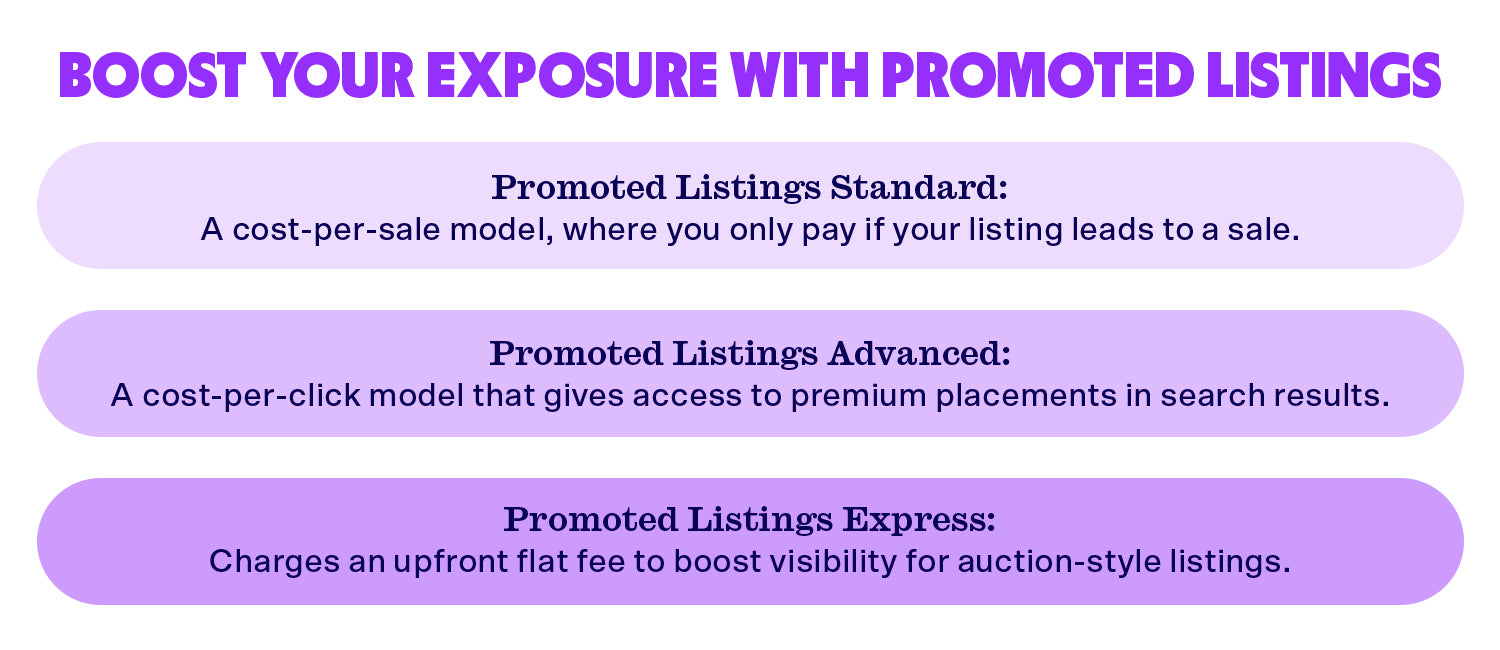
You can also use Offsite Ads to reach external channels such as Google.
With its intuitive interface and widespread recognition, eBay provides a seamless experience for sellers seeking to leverage the power of dropshipping on their own eBay store.
Steps to start dropshipping on eBay
The following are the steps to start dropshipping on eBay:
-
Create an eBay seller account: Simply visit the registration page and click on “Business Account”. Fill in the required information, choose the eBay Store subscription that is right for you, and link to your nominated bank account to receive payments.
-
Find a profitable niche: With so much variety on the platform, it should be easy to find a trending niche with manageable competition that suits your business. The best way to find trending products is to engage in market research. You can use eBay’s built-in tool Terapeak, or check out our blog “Best Dropshipping Tools in 2024 for Business Growth” for more insights.
-
Choose a reliable supplier: As we outlined earlier, eBay has strict policies when it comes to dropshipping. It expects dropshippers to source from wholesale suppliers as opposed to other retailers or marketplaces. eBay also requires your suppliers to meet their delivery standards. Thankfully, Dropshipzone makes this process easy. Our easy-to-use platform takes the guesswork out of supplier selection by connecting you with hundreds of quality Australian suppliers on one platform. We also offer competitive shipping rates from reliable local couriers, so you can rest assured your products will arrive on time, in one piece.
-
Edit your store's design: Here is where you will upload your main store images including the store header and business logo. You'll also be able to provide a store description, choose your featured categories and items, submit a marketing banner and post a store video. Finally, you'll have to set up your basic store policies that will apply to all of your listings.
-
List your first item: It’s best to start with a small product line and upload your products manually. This will help you understand the platform and minimise risk as a new retailer.
-
Fulfil customer orders: At this stage, you’ll forward order information to your suppliers, who will then ship the order to the end consumer. As a Dropshipzone Retailer, you can place orders directly from My Account under the Place Order tab. Simply input the customer’s details, order number, SKUs and shipping information. You can also place orders in bulk with our Batch Order option. Once your supplier has processed the order, they will provide you with tracking information that you can pass on to the customer.
-
Grow and scale: Once your business starts seeing sales, then you should consider automation software and integrations. Both Dropshipzone and eBay offer API integrations to help with everything from order management to analytics. You can find more information on eBay’s APIs here, and on Dropshipzone’s APIs here.
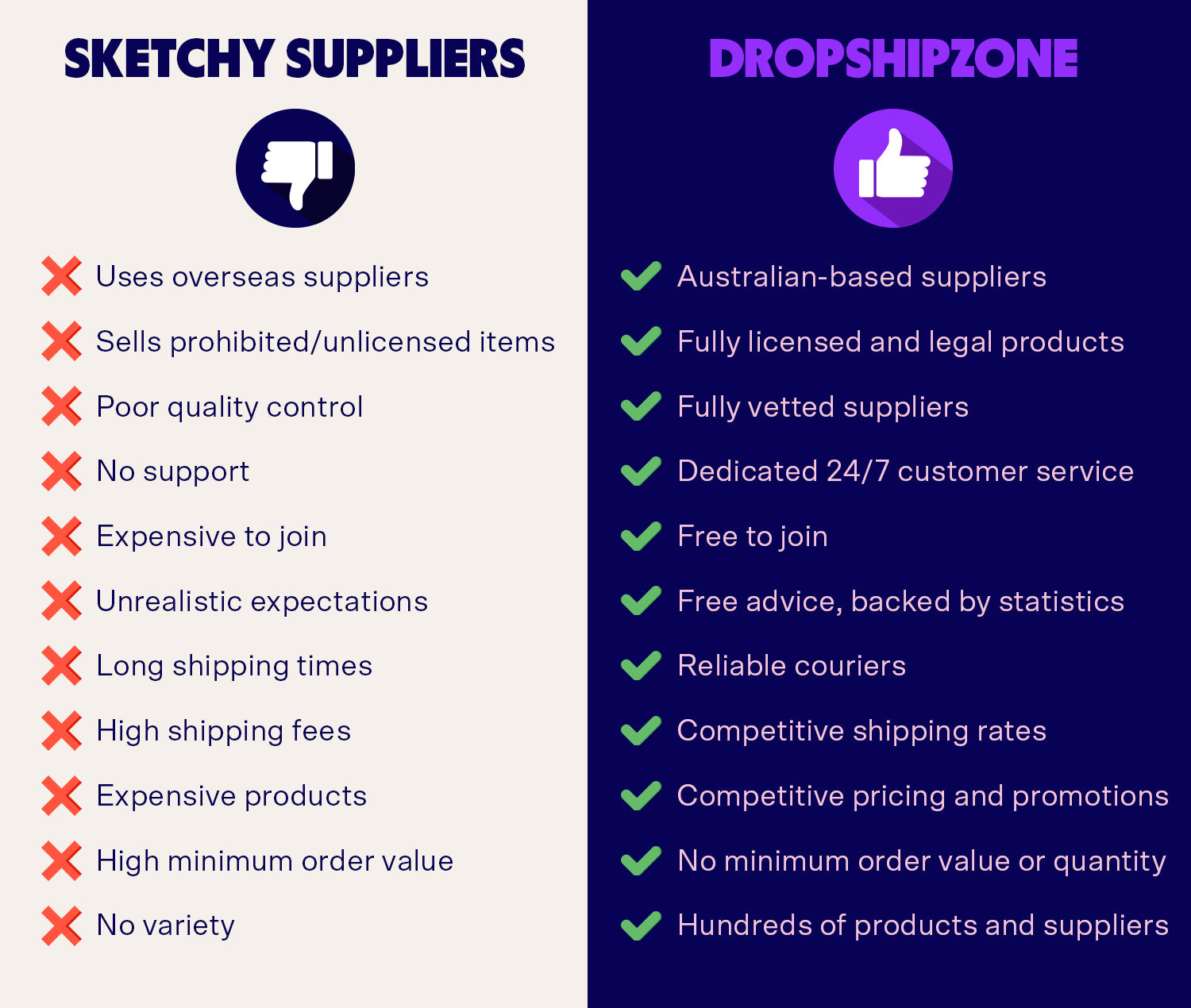
Pros of dropshipping on eBay
Large global reach
Thanks to its large user base, eBay can connect Australian sellers to customers worldwide. This global exposure may increase brand awareness, sales and business growth.
Diverse product range
You can buy a diverse range of products from eBay, with top categories including phones and accessories, games, health and beauty, and home and garden. With such a wide range of products, it’s easy for sellers to cater to various niches.
No need to build a website
eBay’s user-friendly interface makes it easy for sellers to create a simple online store without having to build their own website or pay hosting fees. Entrepreneurs can start their online store with minimal capital or technological expertise, focusing on marketing and customer service.
Built-in trust and credibility
eBay's established reputation helps instil trust in potential buyers, as they are more likely to purchase from a platform they know and trust. This can contribute to higher conversion rates for dropshippers.
Seller protection
As well as buyer protections, eBay has built-in protections for sellers. eBay will remove negative feedback and limit returns requests for buyers that make false claims, demand something that wasn’t in the original listing, refuse payment or complain about something out of your control (such as carrier delays). If your store performs well enough to become an “Above Standard” or “Top Rated” seller, you’ll gain access to additional protections. You can view the full list of seller protections here.
Cons of dropshipping on eBay
Competitive market
The popularity of eBay means that the marketplace is highly competitive. Successful dropshippers must implement effective marketing strategies to stand out from the crowd, including optimising their eBay listings.
Customer service challenges
Since dropshippers don't handle inventory, maintaining excellent customer service is vital. Clear communication, prompt responses, and efficient problem resolution are vital for a positive buying experience. Stores that don’t meet eBay’s customer service standards will be heavily penalised.
Limited customisation
With limited customisation options, it can be hard to create brand awareness and recognition for your eBay dropshipping business. Retailers may have to put additional effort into listing optimisation to stand out among the competition.
Selling limits for new retailers
New sellers on eBay will be subject to selling limits, meaning you cannot sell over a set amount per month. This starts at 10 items worth a total of $500. eBay implements these seller limits to prevent fraud and allow sellers to grow at a manageable rate. As you make more sales and gather positive feedback, your limit will increase. These limits also apply to certain categories.
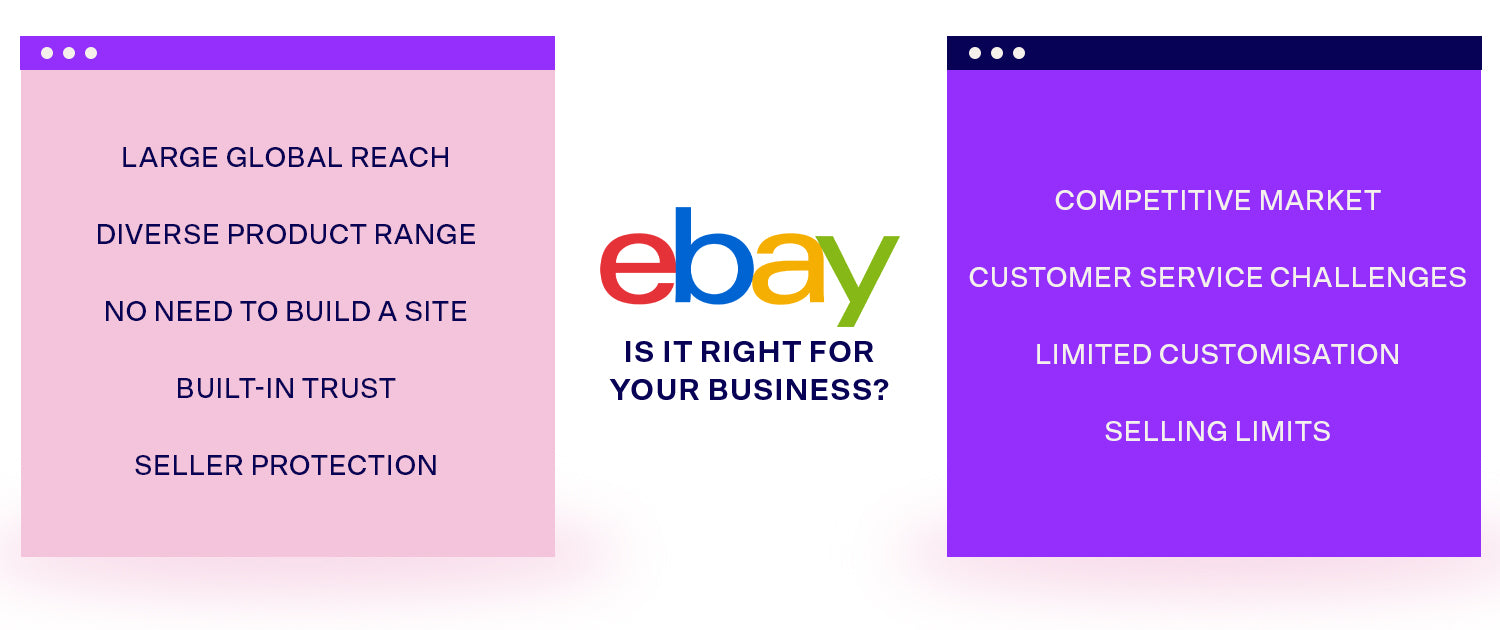
Shopify Dropshipping
Shopify is an all-in-one web-building platform that allows individuals and businesses to create and manage their own online stores. It provides a user-friendly interface and a range of tools to help entrepreneurs set up and run their ecommerce businesses seamlessly. Over 4.36 million websites are currently using Shopify, and merchants estimated a whopping 700 million buyers would visit their stores in 2023. The company launched in 2006 and within 3 years retailers netted a combined total of $100 million in sales. Soon after, Shopify created its APIs, which allowed developers to create apps that could be sold on the Shopify app store - there are now over 8,000 apps available to retailers for everything from automation to integration. They also released a mobile app that allowed merchants to run their stores from their smartphones. In 2013, they implemented Shopify payments, removing the necessity of third-party payment gateways. In 2017, they created a point-of-sale system that could directly accept debit and credit card payments from an iPad. This was also the year they announced direct integration capabilities with Amazon. The company is now valued at $50.7 billion and accounts for 10 per cent of the market share for ecommerce software platforms.
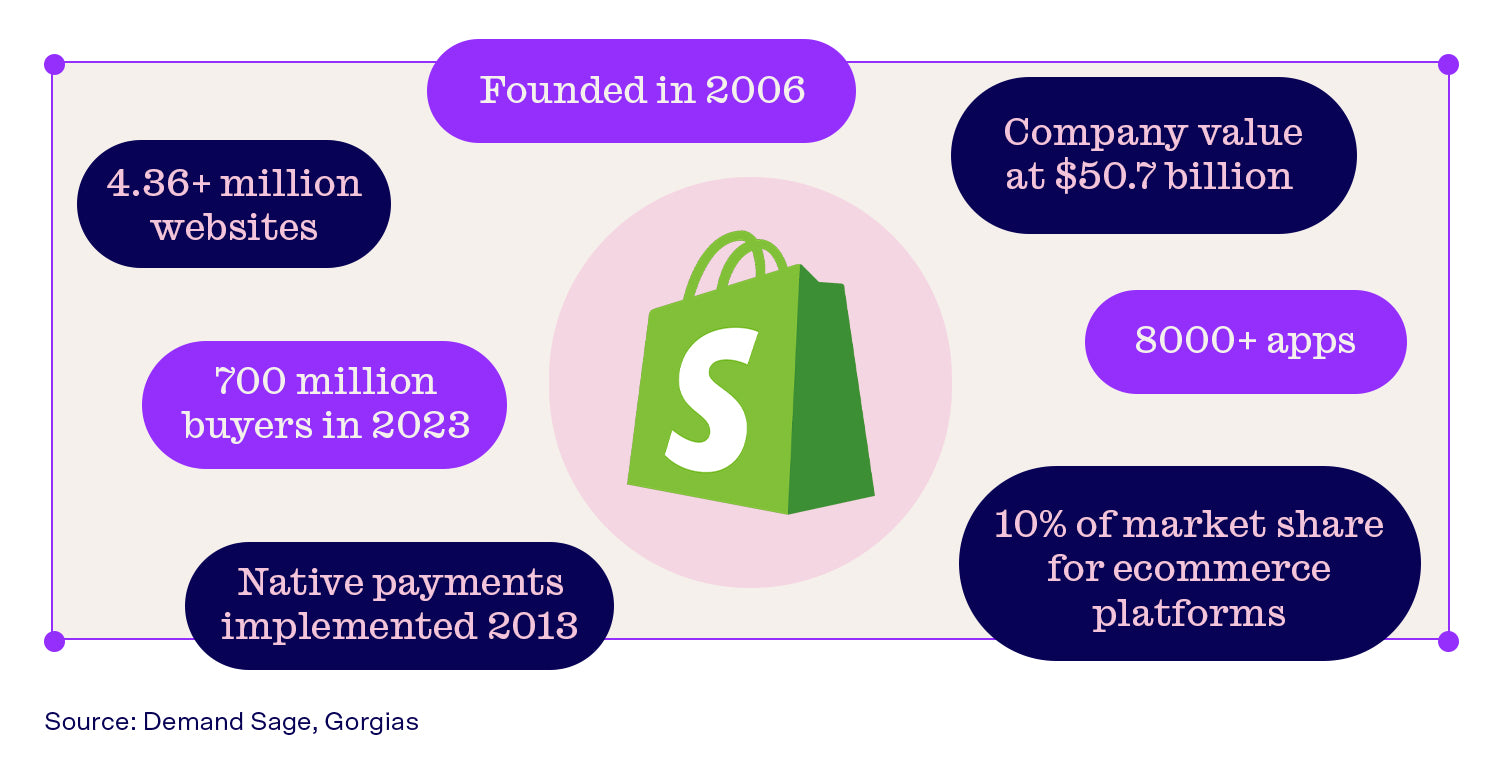
Shopify makes it easy for retailers to create an online store with little to no technical expertise. It allows you to create and customise your storefront on the front end and handles web hosting on the back end. Shopify’s design tools give you access to hundreds of free and paid Shopify themes that are customisable and optimised for both desktop and mobile. Before you even create your account, you’ll also have access to tools such as their Business Name Generator, Logo Maker, QR Code Generator, and more. If you’re still in need of support, visit the Shopify Blog for comprehensive guides on how to build your store, use the platform and grow your business.
Shopify has a comprehensive ecommerce tool kit available from the get-go. You can sell unlimited products, choose from over 100 payment gateways, expand across multiple sales channels, make your store accessible in multiple languages, automatically convert currency, undergo SEO and generate comprehensive reports to manage your store’s performance.
Aside from their extensive tools, one of the biggest appeals of Shopify is the app store. You can use any Shopify apps to streamline the customer journey, automate aspects of your business, integrate with other platforms, or further customise your store. Some apps are free, others require an upfront payment or subscription. For a comprehensive list of Shopify apps that will help you grow your dropshipping business, check out our blog “Best Apps for Dropshipping on Shopify in 2024”.
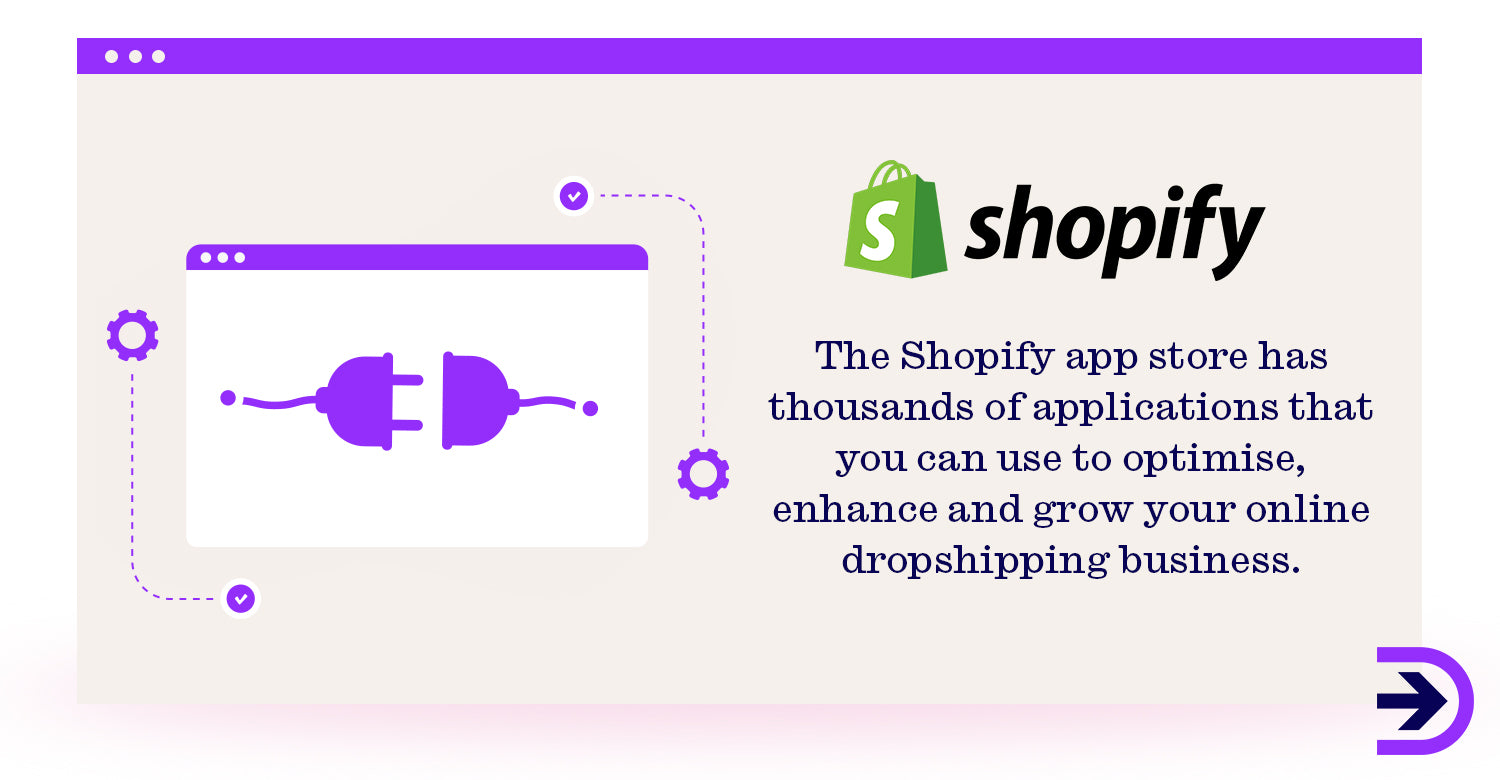
Shopify charges monthly fees (billed annually), with plans starting at $24 monthly. The higher your plan, the more accurate reporting you will receive, as well as additional staff account slots. Shopify also charges transaction fees which vary depending on your Shopify plan, however, these only apply to sellers using third-party gateways - sellers using Shopify Payments are exempt.
Shopify is one of the most used platforms for dropshippers around the world. The platform makes it easy, convenient and affordable for dropshippers to start a business. Their dropshipping policy promises a safe selling platform, but they are more lenient regarding suppliers and shipping times than eBay.
Steps to start dropshipping on Shopify
The following are the steps to start dropshipping on Shopify:
-
Create a Shopify account: From the main webpage, you can click on “Start Free Trial” to begin your free 14-day trial of the platform. You can choose to specify what you’ll be selling and through which channels, or skip this process. Fill out the required information and get ready to create your store.
-
Set your payments, policies and shipping rates: You can choose your preferred payment gateway, generate and upload your store policies, and set your shipping rates (or offer free shipping) from your account settings.
-
Design your store: Pick a free or paid theme that matches your brand identity and customise it to suit your needs.
-
Choose your apps: Dropshipzone Retailers should search for the Sofortig app, which makes it easy to add products, sync descriptions and images, and manage your inventory between Dropshipzone and Shopify.
-
Fulfil your first order: At this stage, you’ll forward order information to your suppliers, who will then ship the order to the end consumer. As a Dropshipzone Retailer, you can place orders directly from My Account under the Place Order tab, or you can use Sofortig to place an order directly to Dropshipzone from your Shopify store. Once your supplier has processed the order, they will provide you with tracking information that you can pass on to the customer.
-
Grow and scale: With no limits to the products you can sell or the integrations available through the app store and APIs, you can continue to add products and improve your store offerings exponentially.

Pros of dropshipping on Shopify
Easy to use
With its easy-to-use interface, wide range of templates, generators, guides and other resources, it is quick and easy to get your dropshipping store ready for launch. It is also infinitely flexible, as you can access your store via desktop, tablet or mobile.
Hosted platform
To host a website, you need a server and someone to maintain it and keep it secure. Hosted platforms like Shopify take care of this for you - all you have to do is launch your site and let it run.
24/7 customer support
Shopify offers plenty of ways for users to contact the platform’s customer support service including by email, phone or live chat. Users also have access to the Shopify Help Center, which contains various articles on all things Shopify and ecommerce. Finally, users can reach out to fellow sellers in the Shopify Community forums.
Convenient third-party apps
Shopify’s app store has everything you need to integrate, automate and enhance your online store. Some apps allow you to sync your inventory across multiple ecommerce platforms. Some apps help you respond to queries, collect reviews, and create loyalty programs. You can use apps to gain further insights into your sales data. If you struggle with photo or video editing, some apps will help you retouch your product images and create bespoke promotional videos. With more apps created every day, there’s no limit to what you can achieve with apps.
Cons of dropshipping on Shopify
No organic traffic
Unlike eBay which comes with its own user base, you’ll have to start from scratch with Shopify. You may need to focus heavily on digital marketing and SEO until your store develops a following.
Transaction fees
Unless you’re using Shopify Payments, each transaction made on your store will have a transaction fee attached. Combined with the subscription fees and app fees, Shopify can be more expensive than other platforms.
No email hosting
Although Shopify will host your website, it does not provide email hosting. Email hosting allows you to use email accounts that include your domain name. This is preferable for businesses as it gives your brand a professional appearance and consistency across communications. If you want to send a message using a custom domain email address, you’ll need to use a third-party email hosting provider.
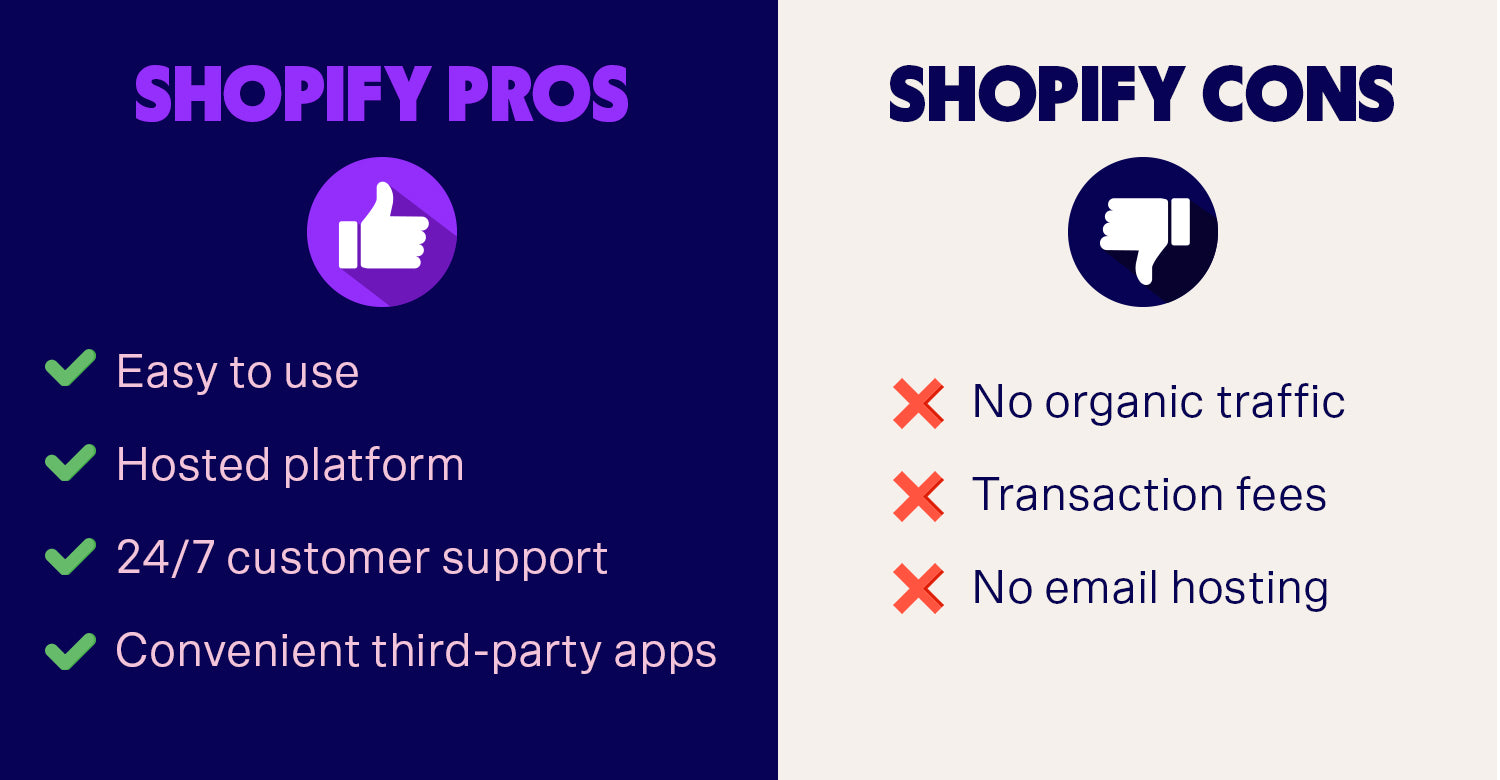
Tips for dropshipping success on eBay or Shopify
Find trending products in the right market
Trending products are the key to a successful dropshipping store. Even the best marketing plans won’t be able to sell a product nobody wants. Thankfully, there are many ways you can find trending products that will help your store thrive. By using tools such as Google Trends, you can see which products are being talked about and where there might be seasonal dips in demand. Other tools such as Niche Scraper and Thieve.co will crawl other sites and online marketplaces and give you insights into not only what products are trending, but what your competitors are selling. You’ll also want to consider your product pricing. Low-ticket items such as jewellery and small gadgets are cheaper to source, have more mass appeal, attract impulse buyers and are less likely to lead to complaints, but you have to make more sales to break even and there can be high competition. High-ticket items come with higher expectations, a higher price tag (especially when it comes to shipping) and a smaller market, but they can be extremely lucrative after just a few sales. For more tips on finding trending products, you can visit our blog “How To Find Top Trending Products in 2024”.
Use reliable suppliers
Dropshipping is beneficial for retailers because it outsources both manufacturing and fulfilment, reducing overhead and leaving dropshippers to focus on marketing their products. However, it means dropshippers have less control over product quality, packaging and the delivery experience. This is why using a reliable dropshipping supplier is so important. When looking for reliable suppliers, you should ensure that:
-
They have a strong online presence.
-
They have good reviews.
-
They have detailed policies and FAQs.
-
They are a licensed business.
-
They are easy to contact.
-
They don’t make outrageous claims about potential income.
-
They don’t sell counterfeit or fake products.
-
They don’t charge miscellaneous fees.
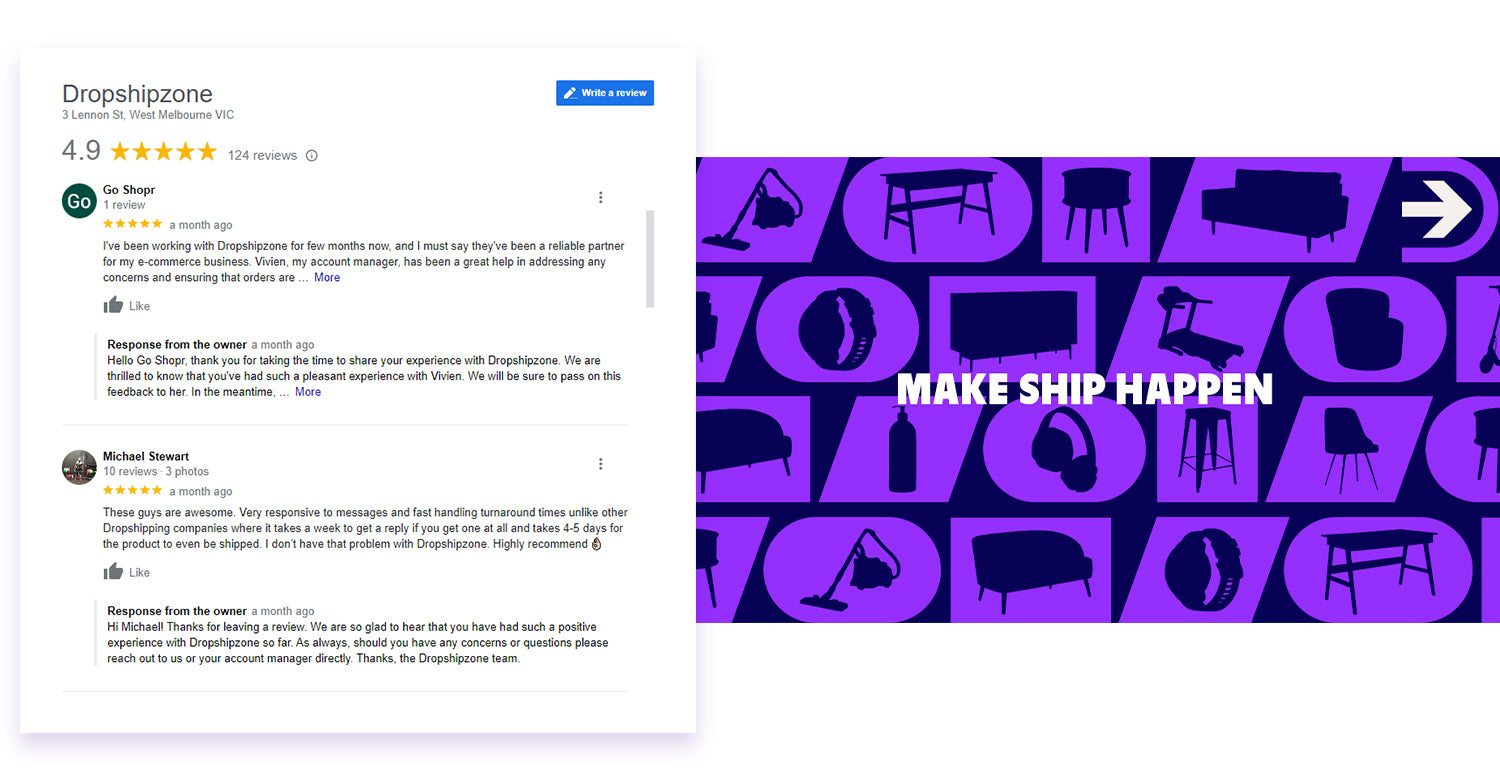
If you want to go the traditional route for sourcing suppliers, you can read our blog “How to Find Reliable and Safe Dropshipping Companies”. To take the guesswork out of finding reliable suppliers, you can sign up with Dropshipzone. As a B2B2C marketplace, we facilitate communication between dropshipping suppliers and retailers, creating a seamless ecommerce experience. Our Suppliers have been carefully selected to provide quality products across all categories, and we have a dedicated quality control team ensuring safety and compliance. Best of all, we have no hidden fees: no subscriptions, no minimum order quantities, and no access fees.
Optimise your store
To attract organic traffic to your online store, you need to be involved with SEO. This means optimising your listings to include commonly searched keywords, providing clear and engaging product images, making sure your website is accessible, and following best practices to ensure that your store is ranking at the top of customer searches.
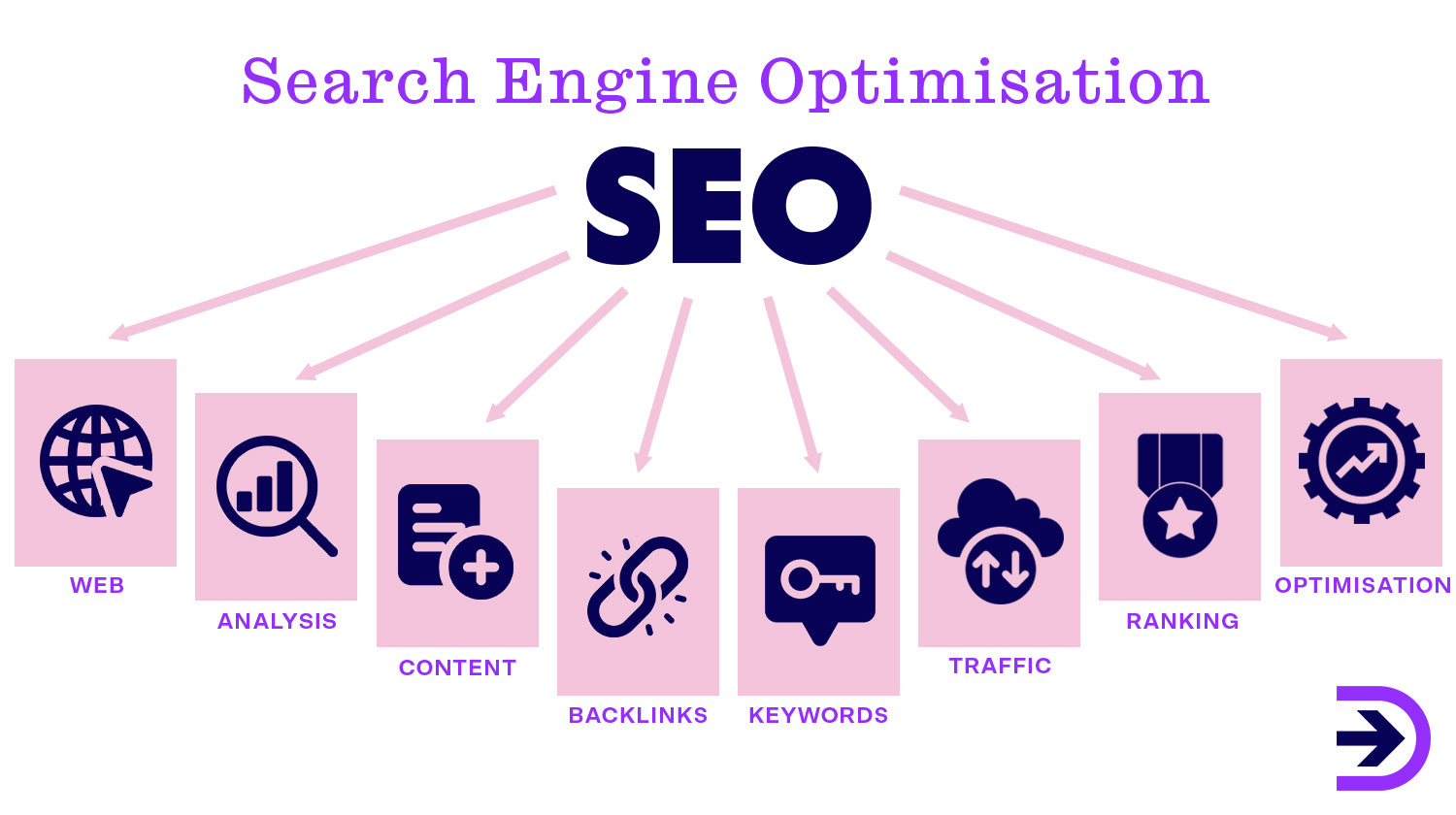
eBay and Cassini
eBay uses a unique search engine called Cassini to help buyers find the best match for their search query. Cassini not only gathers information from product listings, but it will analyse your store from top to bottom, including your returns policy, seller rating and shipping policy. To get your listings to the top of your customer's searches, you should take steps to improve your store feedback, keep your product descriptions clear, keep your product titles specific and relevant, use high-quality photos, and have clear store policies. Most importantly, monitor your Seller Performance and ensure you provide excellent customer service to your customers.
Shopify and Google
Shopify do not have their own algorithm, because it is not a marketplace. Instead of competing on a single platform, you will be competing with the rest of the internet for the Google top spot. While Cassini is purely product-based, Google factors in the intention of the search. Is this search educational, exploratory, or is the customer ready to buy? This is why many businesses have a blog - to capture customers who may not be looking to buy, but who may be encouraged to purchase after reading entertaining or educational articles from the business. Google examines the relevance, quality, useability and context of all of your content, from product listings to metadata. This is why you should be using relevant keywords, have a clear and easy-to-navigate website, and ensure the shopping experience is seamless and simple. Thankfully, Shopify has plenty of built-in tools and automated processes to help you optimise your store, making it easy to reach the top pages of Google with minimal experience.
Nail your order fulfilment process
There are many moving parts in the average supply chain. Without the proper logistics, fulfilment can become unmanageable, especially when you process a high volume of orders. The best way to ensure a smooth fulfilment process is with tech integration. This means taking advantage of third-party integrations and platform APIs to ensure data flows smoothly and securely between you and your supplier. For example, Dropshipzone Retailers can use Sofortig to link their Dropshipzone and Shopify accounts, allowing you to automatically sync your inventory management, product data, and shipping information. You can also ensure a smooth fulfilment process by choosing the right couriers - reliable, local and communicative companies.
Provide excellent customer service
Selling online is not just about products. Customer service is vital for ecommerce, and especially for dropshipping. While online shopping has come a long way, consumers are still wary about buying products online. Without the sensory experience of a brick-and-mortar store, customers have to trust retailers to provide quality products in the timeframe they have provided. It only takes one bad experience for 89 per cent of consumers to stop purchasing from an online retailer. This is why ecommerce businesses need to provide stellar customer service throughout the customer journey. This means taking steps to protect your customer's data, responding quickly to customer service queries, satisfactorily resolving issues, and being transparent about product details and delivery times.
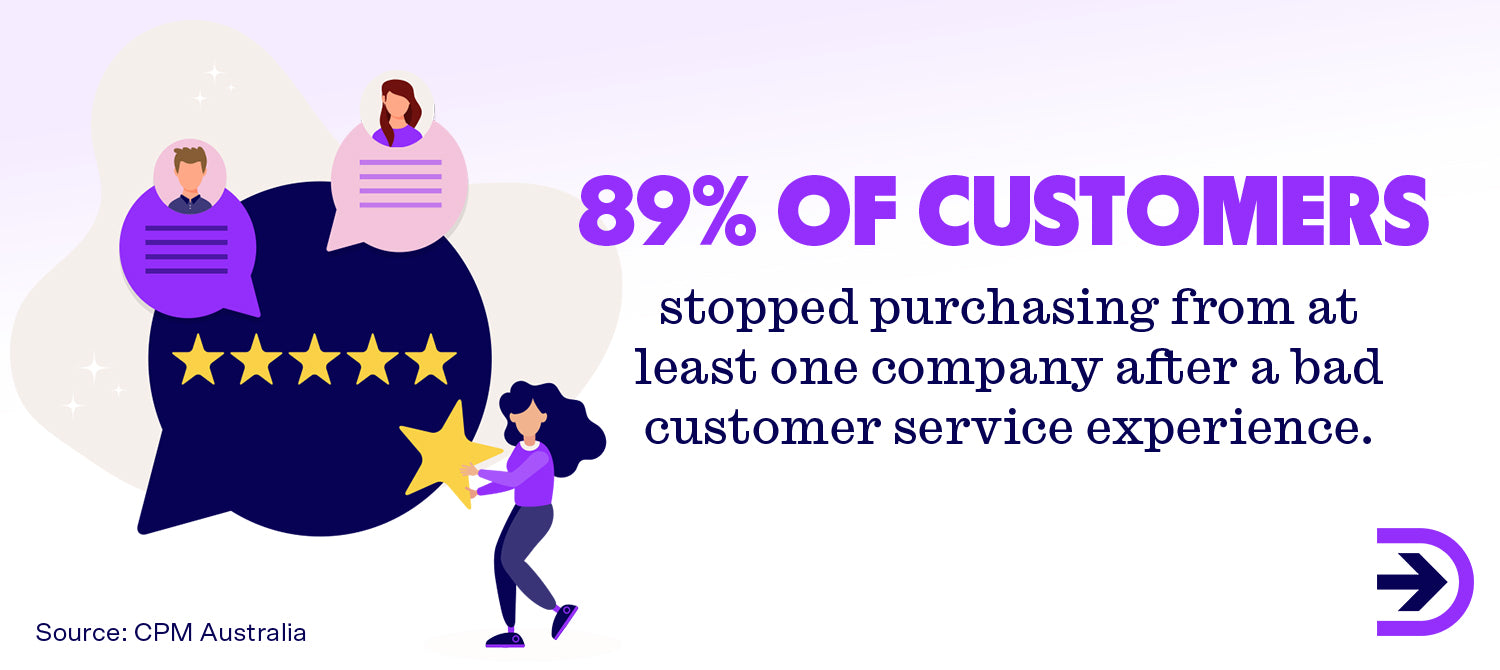
Use both platforms for maximum profit
Why only use one platform for your business when you could be using both? There are many apps available on the Shopify app store that allow you to manage inventory and sales across both platforms. This omnichannel retail strategy can help increase your customer reach, boost customer satisfaction, gain a competitive advantage, produce more accurate consumer analytics and increase your profit margins. It allows you to take advantage of the benefits of both platforms and build brand awareness - just remember to keep your image and communications consistent across both platforms.
Summary
Whether you choose eBay or Shopify for dropshipping, success hinges on understanding each platform's dynamics and implementing strategic tips to navigate their unique challenges. Armed with the knowledge in this blog, you should be able to navigate dropshipping on either or both platforms with ease. With your platforms covered, your next step should be to sign up with Dropshipzone. We have you covered for everything from products to shipping, so you can focus on building your brand and marketing your products. With our integrations, you can run on both platforms with ease. Start growing the online business of your dreams today.

FAQs
Which platform is better for scaling my business?
While it’s still possible to scale on eBay, there are selling restrictions that will prevent you from high-scale growth, especially at the beginning of your journey. Shopify has no restrictions on how many products you can sell, and it has a wider range of tools to help you manage your business expansion.
Is Shopify or eBay better for dropshipping?
While both platforms are great for dropshipping, Shopify comes with a larger suite of tools, more dedicated customer service and fewer restrictions regarding products and suppliers. However, when it comes to organic traffic right out of the gate, eBay comes out on top. Start-ups and small businesses may benefit from using eBay before dedicating resources to a full online store via Shopify, while larger or more established businesses can confidently invest in Shopify.
Can I sell on both eBay and Shopify?
Yes. We recommend it! In today’s economic climate, an omnichannel strategy is the perfect solution to be seen by more people, more often, right when they need your product most. Don’t forget to integrate both of your stores and keep your branding consistent across platforms.
Which platform is more affordable, eBay or Shopify?
At the end of the day, both platforms can be costly, depending on the number of products you’re selling and your preferred payment methods. However, in terms of customisation and tools, Shopify may offer better value for money, particularly at an enterprise level.








